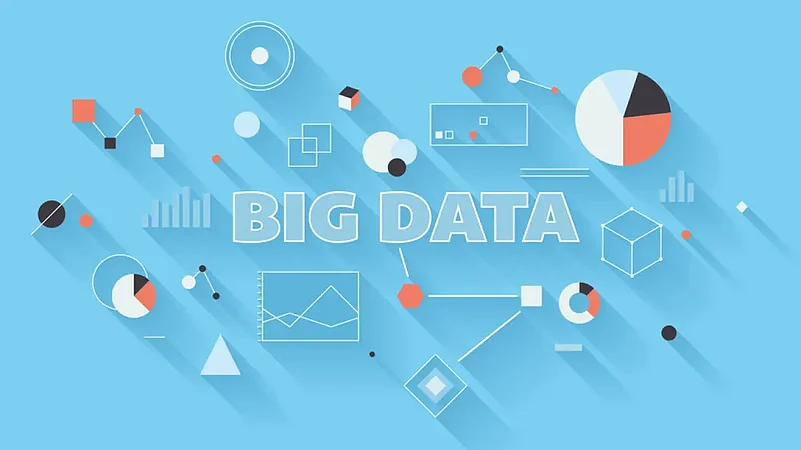For centuries, banks have played a key role in the economic cycle. But traditional banking activities and standard services no longer provide enough of a business case to support this role. Banks have been feeling the pinch for more than a decade now. They need to reduce their costs, develop new business models, activate new revenue streams beyond the standard set of financial services, and meet the needs and expectations of increasingly tech-savvy customers.
To achieve this, banks need to digitalise fully, and managing their data effectively – these bits and bytes, are the basic commodity of the digital age.
Advertisement
Becoming A One-Stop Shop For Customer Journey By Controlling Data Journey
Formerly, banks made their money on the interest on money lent. Today, instead of just providing the money, some banks are broadening their portfolio of services. Take for instance, real estate loan management: aside from interest, some banks are also earning from real estate brokerage, and providing a platform for further trusted real estate services (architectural, insurance, etc.), thus becoming the one-stop shop for the customer’s real estate journey.
Making the evolutionary leap to become the one-stop shop for the customer journey requires the banks to become fully digitalised and to interact with a wider range of stakeholders across sectors. Further, they must take control of the digital infrastructure they use, to connect with their partners and manage their data. Banks need secure and high-performance direct connections to all of their partners – be it insurance companies, FinTechs, payment services and credit card companies, property developers, investment companies, accountants, or, business consultancies.
Advertisement

Figure 1: In whatever sectors banks are lending to customers or working with existing partners, they can deepen their involvement in the value chain to become the one-stop shop for their customer’s financial journey
Mitigating Risks To Reap Benefits Of Digital Banking
That said, banks are wary of taking risks. They want – and are compelled by regulations worldwide to have – the highest level of security and reliability in all of their digital processes. They need the best possible digital performance, with the lowest possible ‘latency’ (response time), to ensure that transactions are processed seamlessly.
So, how can they achieve all this, given both the potential of digitalisation and the need for risk mitigation? They need to bank their data with the same level of control as their money. They need to gain control over the digital infrastructure they use to connect to their entire digital ecosystem – from their cloud and connectivity partners through to their financial services partners, vertical industry partners, and customers. They need to connect their network directly to the networks of their many partners, in order to exchange data in a fast, efficient, flexible, and secure way. This is what is known as ‘interconnection’ – and for the best results, banks need to ensure direct interconnection to other networks.
The Secure Private Party For Data Management – The ‘Closed-User Group’
Interacting with a larger group of stakeholders requires a new approach to interconnection. The broader the ecosystem is, the higher the demand is for flexibility, reduced complexity, and compliance management. From the infrastructure perspective, the bank’s ecosystem needs to be interconnected in a very smart, efficient, and seamless way. This will make it possible to manage the complexity of the environment, as well as being able to manage compliance.
Banks already have very secure networks themselves, using the traditional method of connections via Multiprotocol Label Switching (MPLS), and data transport via IP transit – a combination which is both inflexible and costly. However, once data leaves their own network, it is generally either vulnerable, or becomes very cost-intensive to protect. For those networks to which the bank does not use MPLS – such as connections to clouds, applications, partner networks, and even customers – the data will generally be routed over the public Internet, exposing it to a range of risks.
Advertisement
If, instead, a bank builds its own private special-interest connectivity ecosystem – known as a ‘closed-user group’ – on a secure and high-performance interconnection platform, it can bypass the public Internet, and connect its network directly and securely to the networks of its trusted partners and customers, at the same time being able to control the compliance of partners, ensure high-speed, secure, and flexible access to its digital resources and enterprise-grade applications in the cloud, and thus reduce the costs for connectivity.

Figure 2: The complexity of controlling the compliance of many partners can be overcome by creating a secure and private closed-user group, with the bank’s compliance policies a prerequisite for participation by partner networks
Advertisement
In the process of this evolutionary transformation, banks need to develop an interconnection strategy. This must involve, ensuring seamless interconnection to internal resources. It must consider compliance and risk mitigation, and secure connectivity to external partners and customer access networks. Finally, it should provide a framework for developing new revenue streams based on the opportunities that such connectivity avails.
Creating a secure and private special-interest ecosystem on a high-performance interconnection platform is an essential step in the journey to the future of banking.
The author is the CEO of DE-CIX International
(Disclaimer: Views expressed are the authors’ own, and Outlook Money does not necessarily subscribe to them. Outlook Money shall not be responsible for any damage caused to any person/organisation directly or indirectly.)















 Just one email a week
Just one email a week